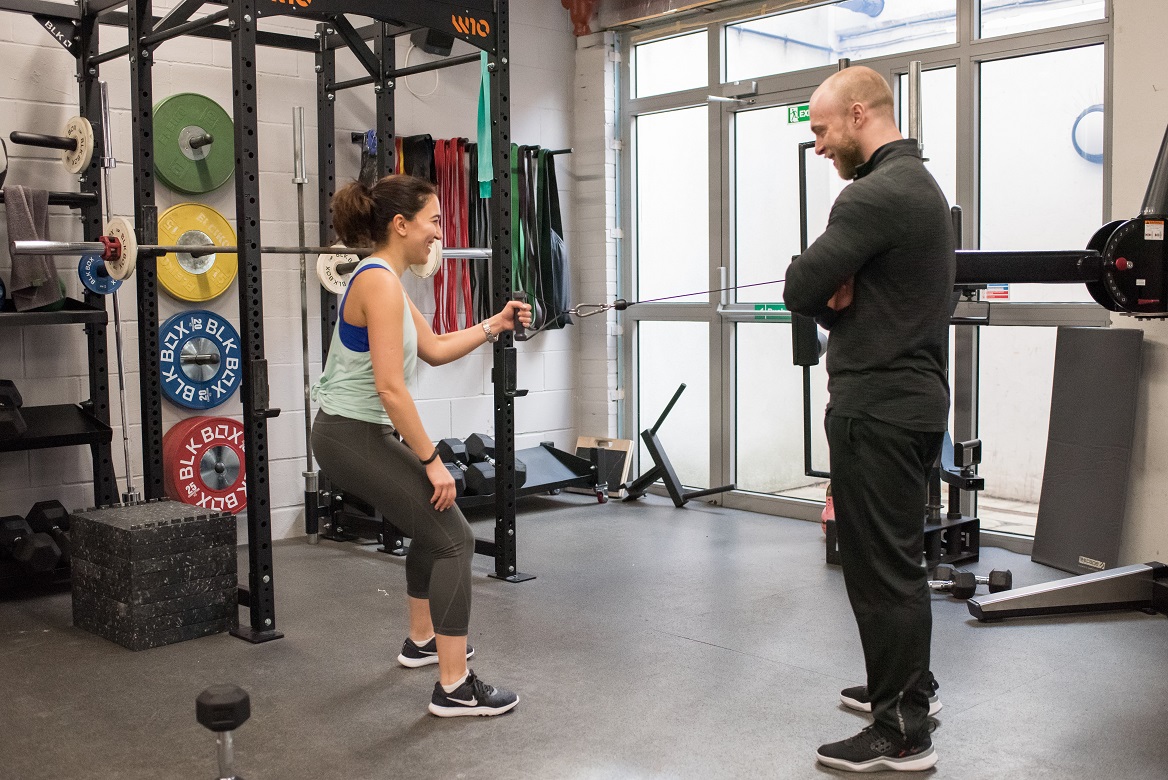Staying fit while pregnant has huge benefits both physically and mentally. If you are feeling strong and healthy enough to still exercise throughout some, or all, of your pregnancy, it can bring positive effects during and after your pregnancy.
Prenatal Training Programme Tips
To begin with, it is important to note that every woman’s pregnancy is different. It is not going to be a case of one size fits all when it comes to planning a training programme during the prenatal stage. Find one that suits you and your pregnancy.
A well thought out programme must consider a woman’s individual training levels, training history and the time she has available to train.
Getting advice from a knowledgeable and qualified coach is vital to make sure you and your baby are safe and not put in danger. Before embarking on a personal training programme it is recommended to seek medical advice first.
The athlete Paula Radcliffe carried on training throughout her pregnancy. 10 months after giving birth she went on to win the New York Marathon.
Although maintaining your training while pregnant can bring benefits, it is not advised to start learning any new skills or movement patterns that your body has not been used to doing before.
During each stage of pregnancy, the body undergoes a huge amount of stress and change. If you choose to keep training you should focus on maintaining activity. Do exercises that make you feel happy and healthy rather than having aesthetic or performance-specific goals.
A few considerations
Make sure you are staying hydrated. During pregnancy, the body’s blood volume will increase over time by up to 50%. Blood is very rich in water which means expecting mothers will need to make sure they are drinking plenty of water.
After the first trimester consider avoiding the supine position (lying flat on your back). There is a risk the growing uterus can compress the vena cava which can stop deoxygenated blood flowing to the heart. You should not be feeling any light-headedness or breathlessness when lying on your back.
Avoid doing any barbell exercises that will have to change the direction the bar moves in, in order to go over the growing bump. This could increase the risk of injury if the movement is not performed with the correct technique.
Most importantly listen to your body. If you do something that feels wrong or too much, it’s probably best to stop.
Benefits of exercising during pregnancy
Exercises may have to be modified and training intensity and load may have to change. However, there are some significant benefits to continuing to exercise while pregnant.
Exercise can:
- decreased risk of lower back pain
- decrease postpartum recovery time
- maintain overall physical fitness
- improve mental well-being
- decreased risk of high blood pressure
- decreased risk of gestational diabetes associated with pregnancy
- can help with labour and delivery of the baby
- help you lose the baby weight after pregnancy
Suggested exercises
The exercises listed below are only suggestions. They are aimed at people who are already familiar with them and who also feel confident to continue with their training while pregnant.
Ring rows
Can help you develop and maintain a strong back.
This is important to support your growing breasts during pregnancy and to help maintain good alignment and posture.
The Palloff press
Is a great anti-rotational core exercise.
During pregnancy, it is important to maintain a strong core to help the body carry extra weight. The spinal alignment will change as pregnancy progresses. It’s important to focus on exercises that will encourage and promote maintaining a neutral spine and pelvis.
It is always a case of risk-to-reward when selecting exercises. You want to avoid using the Valsalva manoeuvre (holding your breath) during pregnancy as this can cause an increase in intra-abdominal pressure.
Later in the third trimester, exercises as simple as a bodyweight squat might be enough to help work a strong and stable core.
Romanian deadlifts
Will help promote a strong posterior chain.
This could help keep the sacrum (the triangular bone at the base of the spine) in a more neutral position. This will mean less stress on the sacroiliac joint and pelvic floor muscles.
Steady-state, low to moderate intensity cardio can help maintain your cardiovascular fitness.
For example:
A Watt bike
Regular aerobic exercise increases the size of your placenta and also it’s capacity to exchange oxygen, CO2, nutrients and waste products to and from the baby.
During pregnancy, your heart rate may not be an accurate measure of exertion level. It is always best to go on how you feel rather than using a heart rate monitor to regress or progress your training.
Exercise while pregnant can still be fun, creative and interesting. You might not feel like you always want to train, and, on some days, a long walk outside might just be a better option.
Remember to listen to your body on that day. Don’t do anything that doesn’t feel right but still enjoy your training and understand the benefits it can have to help you feel strong and confident during and after your pregnancy.
If you have any questions on the above or would like some advice on personal fitness on how we could help you, don’t hesitate, visit one of our personal training gyms.
Related Articles
- What Exercises Can I Do During Pregnancy
- Women’s Fitness Training – Shifting the Focus
- Should Women Lift Weights?
- Training Tips for Women
- Womens Health Boosters

